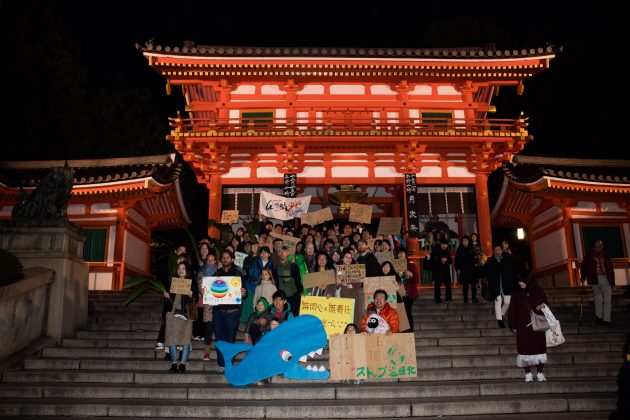
Recent years have seen waves of major climate marches sweep across the globe. In 2015, the Global Climate March drew hundreds of thousands to turn out in support of a definitive agreement at the Paris Climate Summit. Frustrated by continued inaction on the climate crisis, young people around the world are taking matters into their own hands. Youth have been key players in the 2019 Global Climate Strike demonstrations, with participants numbering in the millions worldwide.
In Japan, a country known for relatively few large-scale protests, a surge of student-led activism has led to similar environmental demonstrations popping up, from Tokyo to Fukuoka. While the scale of Japan’s climate protests is much smaller compared to those in other countries, the new movement has the potential to revive and define youth activism in the country.
One prominent environmental organization that has brought people to the streets in protest is Fridays For Future. The movement was inspired by Greta Thunberg, who decided to skip school in August 2018 to sit alone outside of the Swedish parliament, holding a sign with the words “school strike for climate”. She decided to continue skipping school in strike for the climate every Friday until the government took meaningful action, which is where the organization gets its name.
The aim of Fridays For Future is to pressure those in power to implement policies that will ensure that the increase in global temperatures is kept safely below 2 degrees Celsius, in accordance with the 2015 Paris Agreement. Fridays For Future groups around the world have added other demands that address their own localized climate concerns, but the main message remains the same: listen to the scientists and act now before it is too late.
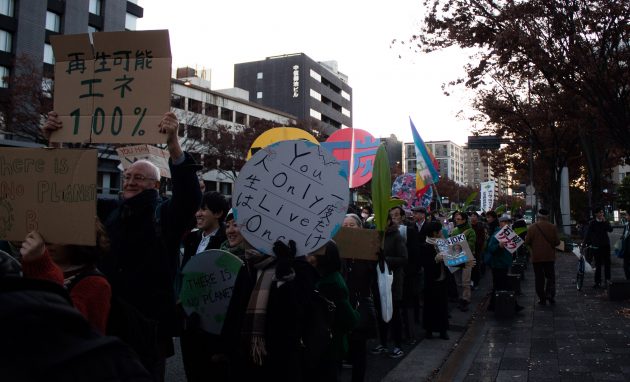
Japan’s first Fridays For Future march took place on February 22, 2019 in Tokyo. In addition to Fridays For Future, many other civil society organizations like Greenpeace and 350.org, as well as several companies like Patagonia, also support Japan’s climate demonstrations. After the Tokyo march, the movement quickly spread to Kyoto when Climate Youth Japan representative Imai Erina and two other student members of the organization began a local chapter of Fridays For Future with the support of environmental NGO Kiko Network. All three student founders had previously experienced climate demonstrations abroad through their participation in COP, the annual United Nations Climate Change Conference.
Fridays For Future Kyoto’s first demonstration was held on March 15, 2019 and attracted around 100 participants, garnering attention from prominent national media outlets such as the Mainichi Shimbun and NHK. Since then, Fridays For Future chapters have spread to neighboring Osaka and Kobe, as well as to other cities throughout Japan. The marches have so far attracted a peak nationwide attendance of 5,000 on Global Climate Strike Day on September 20, 2019. While 5,000 may seem like an underwhelming turnout compared to the hundreds of thousands who participated in youth climate marches in the United States and across Europe, it is representative of a significant shift in the willingness of youth to engage in protest movements in Japan.
Youth street demonstrations in Japan remain relatively rare. Preceding Fridays For Future, another organization called Students Emergency Action for Liberal Democracy, or SEALDs, made a short-lived attempt between May 2015 and August 2016 to bring protest to the mainstream by recasting demonstrations in a fun and cool light. In August 2015, SEALDs gathered as many as 30,000 people in front of the National Diet Building in Tokyo to oppose proposed security legislation intended to remove restrictions on Japan’s Self-Defense Forces, including revisions to the government’s interpretation of Article 9 of the Constitution, the pacifist clause which renounces war.
While SEALDs managed to raise awareness about protest as a means of political participation, the group was also met with fierce criticism, including weak grounds for opposing security legislation, the use of unpersuasive slogans, and the fact that their actions were politically ineffective, as they were unable to prevent the bills from passing into legislation. Despite the movement’s vibrant approach to organizing sleek, street party-style demonstrations, use of accessible language, and its thoughtfully designed website and publications, SEALDs ultimately failed to bring youth demonstrations out of subculture status, and dissolved in 2016.
Like SEALDs, Fridays For Future also strives to make protest appear friendly and inviting to young people, but this time with a movement grounded in the scientific fact of climate change rather than a critical perspective on specific government legislation.
“I have focused on making protests appear more fun and accessible.”
One reason why protest movements struggle to gain traction in Japan is highlighted in an interview with Fridays For Future Kyoto organizer and co-founder Tsukamoto Yuhei, who explains that today’s youth are generally more content with the state of society than the generation who participated in the massive student protests of the 1960s, which reached a peak attendance of over 300,000. The protests were staged in opposition to revisions of the security treaty between Japan and the United States and on multiple occasions turned into violent clashes with the police, resulting in thousands of arrests. The protests eventually lost the Japanese public’s support due to the violent image associated with the participants, ultimately resulting in protestors failing to achieve their goal to stop the ratification of the revised treaty.
Similarly to the youth demonstrations seen today, the 1960s protests took place within the larger context of student protests happening in other countries. In contrast, youth climate activists are faced with the challenge of engaging a relatively complacent student population on an issue that seems much less immediate and visible than the presence of the US military did: environmental pollution and the emission of greenhouse gases. However, as Yuhei explains, the abnormally strong typhoons and severe heat waves that have been battering Japan over the past several years have contributed to a raised awareness of climate change.
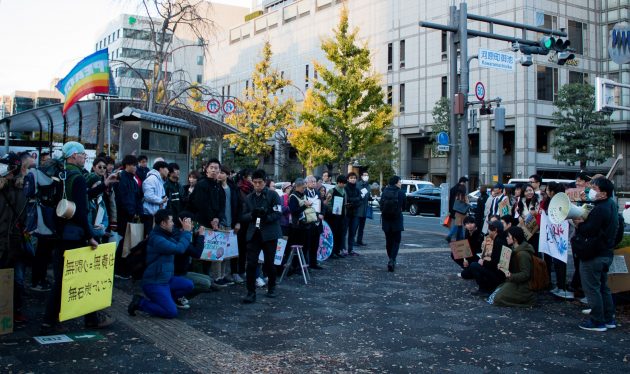
The history of protest in Japan and its unique cultural context in turn shape contemporary youth activism, which can be seen in how Fridays For Future operates in the country. For example, the violent impression left by the protests of the 1960s contributes to the negative connotation of the Japanese word for demonstration, demo, and the stigma surrounding protests in Japan. This has been a persistent obstacle to organizing large-scale protests and, as a result, informs the distinct strategy of youth climate activists in Japan.
In light of the harsh perception of protests leftover from the 1960s, coorganizer Imai Erina emphasizes that she believes doing things peacefully is key. She worries that the radical image of Extinction Rebellion, another prominent environmental organization, founded in the U.K., could make things more difficult for climate action efforts in Japan.
To improve the image of protests among the public, Erina explains, “I have focused on making protests appear more fun and accessible, carrying plants while marching and trying to use positive language that would appeal to people.” She also hopes that taking a peaceful, playful approach will help thaw Japanese youth’s “numbness to our society and the idea that we should not go against power.”
Other obstacles exist within Japan’s specific cultural context. These include an aversion to standing out and causing meiwaku, or inconvenience to others, as well as a formidable reluctance to challenging the status quo. Fridays For Future Kyoto member Ishizumi Tatsuya explains that “people in Japan tend towards consensus and are critical of things that have not yet been popularized,” making it harder for new activist movements to gain acceptance.
However, Tatsuya believes that once Fridays For Future is widely known and their message is shared by people of influence, anything is possible. Japan’s culture of conformity points to a potential tipping point for public awareness about the urgency of climate action. Once the tipping point is reached, Japan’s sustainability efforts could improve very quickly as the public adopts the new “greener” standard en masse. For now, Tatsuya is doing his part to widen the movement’s reach by recruiting his friends to join in on the marches and setting a positive example on social media.
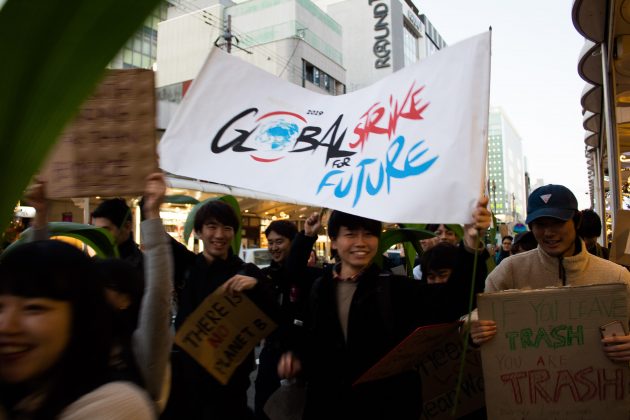
Fridays For Future in Japan is also unique in terms of its organizational aspects. Its members communicate in keigo, the polite Japanese used in the professional sphere, and use digital tools such as LINE and Slack for messaging, Google Docs for planning, Zoom for virtual meetings, and Facebook, Twitter, and Instagram for promotion and marketing purposes. Decisions are made through consensus across a relaxed hierarchy of members. If the group is contacted by a member of the press or a student researcher, the question is shared with all members to contribute their own opinions. Meeting dates are set through polls posted on the LINE messaging app, but only if there is a clear majority. During meetings, structured notes of the proceedings are dutifully recorded in a shared Google Doc that all members have access to.
Emblematic of the times, the use of social media is a central part of Fridays For Future’s activities in Japan. It is key to the group’s strategy to raise awareness of climate change and helps to create the movement’s fun, approachable image, which is vital to gaining wider support from Japanese society.
Topics of discussion include how to best translate trending hashtags like #howdareyou, a reference to Greta Thunberg’s UN speech reprimanding world leaders, as well as crafting informed responses to online critique, and organizing “photo actions,” or mini actions, which is when members pose with a sign about climate change in a public place, take pictures, and then promote the image on social media platforms. These photo actions make use of the influence that strong images have on social media in a way that doesn’t cause disruption and is not challenged by the physical necessity of attracting a large crowd.
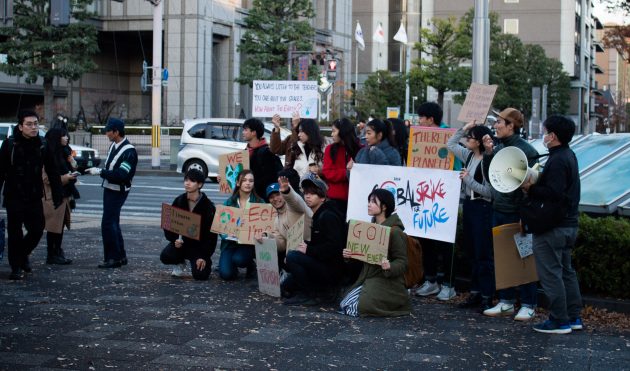
Another tactic is the “Twitterstorm,” encouraging as many people as possible to post the same hashtag during a set time period so it appears on Twitter’s trending list. One Twitterstorm during the Global Climate Strike on November 29th, 2019 reached number seven on Twitter trends, using the hashtag Koizumi daijin kikoemasu ka, which translates to “Can you hear us Minister Koizumi?”—referring to Japan’s young Environment Minister, Koizumi Shinjiro.
Going forward, Fridays For Future members are working on a strategy to magnify the effectiveness of their efforts and increase turnout at climate marches. Kyoto organizer Tsukamoto Yuhei describes the strategy as including the creation of a strong network to connect Japanese youth who are aware of the climate crisis, making it easier to exchange information, learn together, and take action.
There are also plans to build more connections with Japan-based companies. To date, staff from Patagonia have attended and spoken at several marches and the store has served as a venue for Fridays For Future Kyoto’s workshops and meetups. Lush, a popular international cosmetics brand, has even shut its stores during Fridays For Future demonstrations to encourage people to attend the event.
“Japan’s culture of conformity points to a potential tipping point for public awareness about the urgency of climate action.”
Fridays For Future also intends to strengthen channels of communication with Minister Koizumi as a part of its government outreach efforts. Another important objective is to advocate for more youth representation in the council of the Ministry of Environment, where most members come from older generations who likely won’t be around to see the worst effects of climate change.
In pursuit of getting the government to formally recognize the magnitude of the climate crisis, Fridays For Future groups in Kobe, Osaka, and Kyoto are lobbying their local governments to declare a Climate Emergency. Due in part to Fridays For Future Kyoto’s efforts already, the city assembly has recently adopted a memorandum calling for further strengthening of measures against global warming on the grounds of the climate crisis, just a step away from a formal Climate Emergency Declaration.
While there is still much to be done, Japan’s new chapters of Fridays For Future have come a long way in a short period of time. Capitalizing on the momentum and name recognition that Fridays For Future has internationally, its Japanese members continuously negotiate how best to tailor the movement to the local context, offering a window into the fresh and inspired image of youth activism in Japan.

ROBIN RAUNER moved to Kyoto in 2015 to study Internationa Relations at Ritsumeikan University. She began participating in local climate marches in March 2019 and was previously involved as a member of Fridays for Future Kyoto. She founded and currently contributes to the Kyoto Eco Map, an interactive guide to eco-friendly, zero packaging, organic, and vegetarian and vegan businesses in Kyoto.
Photos by Robin Rauner.